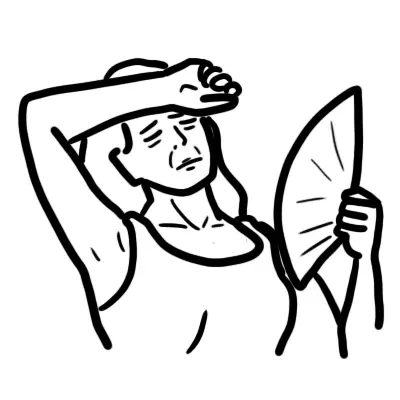Menopause


The menopause means the final menstrual period – diagnosed retrospectively after one year of amenorrhoea. Cessation occurs due to loss of ovarian function. The “declining oocyte pool” theory states that a newborn girl is born with millions of eggs, most of which die by atresia. The average age of menopause is 50, however this can vary widely between different cultures.
Menopause: is the last period, but the term is often used to cover the physiological cahages that occur around this time
Perimenopause: Period beginning with the first clinical biological, and endocrinological features of the approaching menopause
Premenipause: or menopause transition, begins several years before menopause.
Postmenopause: The last menstrual period
Premature ovarian failure: Cessation of menses for more than 1 year before 40 years of age, secondary to loss of ovarian function
Climactric: Phase encompassing the transition from the reproductive state to the non-reproductive state.
The term peri-menopause is synonymous with the climacteric. This is a phase of menstrual cycle irregularity, fluctuating hormone levels and symptoms associated with ovarian senescence. Lasts an average of 4 – 6 years before the final menstrual period to 1 year after the menopause.
Menopause is a normal physiological process!
The most important clinical presentation is irregular periods or oligomenorrhoea.
Short term problems
Intermediate Problems
Long-term problems
Investigation are usually unnecessary if women is of menopausal age. Investigations that could be considered:
Non-pharmacological
Pharmacological treatment Oestrogen supplementation is the bases of replacement therapy. However, because of the long-term side effects of unopposed oestrogen often progesterone is also given. Oestrogen therapy (hormone replacement therapy) include:
Hormone replacement therapy is ofference to treat menopausal symptoms and to reduce long-term hypo-oestrogen side effects. Adverse effects: Nausea/vomiting, Endometrial cancer, Breast cancer, Venous thrombolic disease, Stroke. Contraindication Venous thromboembolic disease, Pregnancy, liver disease.
Due to the risks involved with HRT, many women may prefer the perceived safety of complementary and alternative medicines in the management of menopausal symptoms.
Commonly used alternative medicines
The evidence
Effect on placebo on hot flushes over several months is usually around 50%.
Complications of low oestrogen (post menopause)
Complications of Prolonged HRT
Overview
Premature ovarian failure is the cessation of menses for more than 1 year before 40 years of age, secondary to loss of ovarian function. Affects approximately 1% of women. Patients with premature ovarian failure present similarly to women of normal menopausal age, with symptoms of: hot flushes, sleep disturbance, irritability, infertility and vaginal atrophy.
Risk Factors
Differential Diagnosis
Unlike those who present at normal menopausal age, women suspected of having POF should always have their hormone levels investigated.
Investigations
Macgowan, BA., Owen, P., & Thomson, A. (2014). Clinical Obstetrics & Gyaenacology. 3rd ed. Saunders Elsevier. London.
Oxford Handbook of Obstetrics and Gynaecology 3rd edition

Please confirm you want to block this member.
You will no longer be able to:
Please allow a few minutes for this process to complete.
Discussion